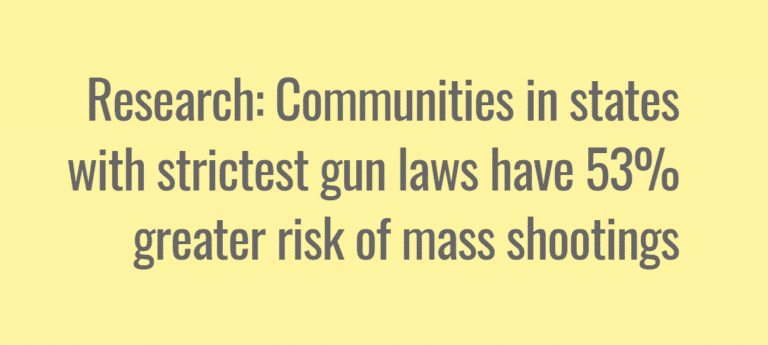A group of trauma researchers from Ohio have identified the social determinants of communities at risk of mass shootings. Common characteristics include a shortage of mental health professionals, a relative lack of socialization opportunities, higher rates of income inequality and high housing costs. The researchers also found that communities in states with the strictest gun laws had a 53% greater risk of a mass shooting event.
The results of the study were presented at the American College of Surgeons Clinical Congress 2018 in Boston. In this study, “mass shooting” was defined as a shooting event with four or more fatalities, excluding those with a clear motive such as robbery or gang-related activities.
The research team used data from the Federal Bureau of Investigation, the U.S. Census, the Centers for Disease Control, the National Institutes of Health and the Robert Wood Johnson Foundation. The investigators looked at communities where 155 mass shootings in the U.S. occurred.
Gun laws: results tell complex story
According to lead author Stephen F. Markowiak, MD, general surgery research fellow at the University of Toledo, strict gun laws were associated with a higher incidence of mass shootings.
“The counties in the states that have strict gun laws, such as California and New York, actually have a high incidence of these multiple-shooting events, and that holds true even when you control for urbanicity,” Dr. Markowiak said.
However, Dr. Markowiak does not believe the study contradicts other research that suggests the value of strict gun laws. “Our data agrees that stricter gun laws are associated with less overall violent crimes,” he said. “It’s just that these multiple-shooting events appear to be an exception to that rule.”
In addition, the researchers identified two types of gun laws that stood out as having a correlation with a lower incidence of multiple shootings: mandatory reporting of mental health records to the National Instant Criminal Background Check System (NICS) and restrictions on open carry of firearms.
But Dr. Markowiak hesitated to conclude that these laws have a protective effect in preventing mass shootings. “The other laws that we looked at really did not have an effect,” he said.
Other mass shooting risk factors
The researchers also identified several mass shooting risk factors rooted in economics, social characteristics and the healthcare community.
According to Dr. Markowiak, access to mental health professionals is one of the key social determinants of communities at risk of mass shootings. “Looking at our data, the mismatch of mental health providers per capita appears to place more urban communities at risk — greater than the national median of 490 persons per provider,” he said.
Another key social determinant of at-risk communities was the average number of social interactions per person. “If you look at communities where these events occurred, the average individual had 10.5 to 11 people that they commonly associate with, compared with an average of 13 or so close associations in communities where they didn’t occur,” he said.
The researchers also noted that people in at-risk communities engaged in less leisure-time physical activity, and the communities themselves were on average 30.7 percent less rural (p<0.001), 3.38 years younger (p<0.001), had a 3.07 percent higher incidence of overcrowding or lack of utilities (p <0.001) and had a higher ratio of income inequality.
Public health perspective recommended
“This study certainly draws attention to the consequences of physician shortages nationwide — not so much at the level of service, but at the level of the primary-care physician and mental-health practitioners,” Dr. Markowiak said.
“Traditionally, these shooting incidents get a lot of attention because they come into the hospital as trauma,” he said, “but they really need to be looked at more from a public health perspective as to the types of services we are going to provide for the community and what the implications are for the community.”
Dr. Markowiak believes the study points to a need for more community involvement. “If we focus on making our communities healthier places where people have access to doctors and healthy spaces, and we restore a sense of community, then I think our project indicates we may be less likely to see these mass shooting events occurring,” Dr. Markowiak said.
Dr. Markowiak’s study coauthors are David G. Heidt, MD, FACS, of the University of Toledo Medical Center, and Phillip J. Welch, PhD, of the University of Toledo and Bowling Green State University.
The goal of the study was to not promote any political position on gun violence. “We just wanted to see where the data was going to take us,” Dr. Markowiak said. “That’s what led to some of the more surprising findings.”

